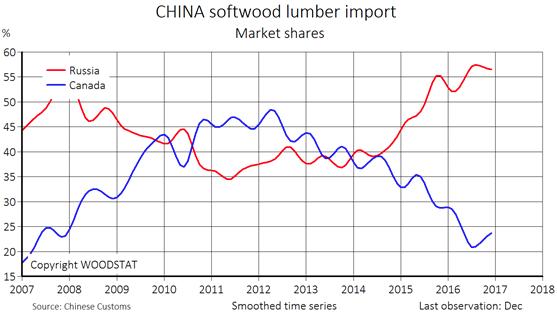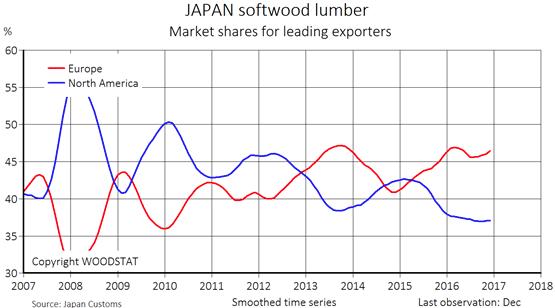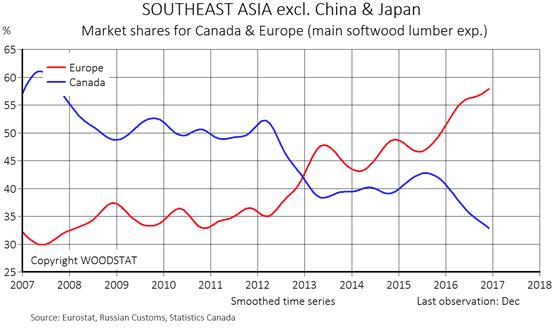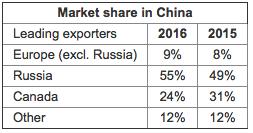
When Russia and Europe have increased its market share in the Chinese lumber market Canada has lost market share. The development in Japan is similar. Europe (excl. Russia) increased its market share from 41% to 44% in 2016 and Russia from 13% to 14%. Canada's share declined from 34% to 32% and the Canadian market share is now at a very low level.
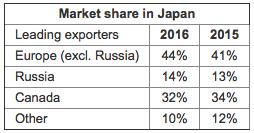
In other countries in East Asia (South Korea, Taiwan, India, Pakistan, the Philippines, Vietnam and Thailand) imports of softwood lumber are increasing quickly and their total import in 2016 amounted to 3.3 million m³ from leading exporters in Europe, incl. Russia and North America. Europe's market share has increased dramatically in recent years, while the corresponding decline occurred for Canada.
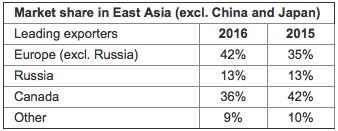
Current forecasts for European construction continue to show slow growth why also lumber consumption is expected to rise slowly. "We see a good development in many countries in East Asia that increase the consumption of lumber. If we add an increased interest in wood as a building material, the outlook is very positive," says Jenny Wessung, CEO Woodstat.
